I. Introduction
As societies continue to be urbanized, changes have been observed including more centralized populations, increased traffic due to industrialization, and increased opportunities to enjoy sports and other leisure activities. These changes not only affect people's lifestyle but also increase the rate of injury. Therefore, research on maxillofacial injury and fracture has been actively conducted in various fields.
The maxillofacial region is prone to injuries and fractures due to its protruding anatomical feature. The frequency of fracture around the mandibular region is higher than that of the other parts of the body
1-
3. Although maxillofacial fracture may not be life-threatening, immediate treatment should be applied because fractures can directly affect functional aspects and the appearance of the maxillofacial region. According to domestic and international research on mandibular fracture, car accidents, assaults, and external injuries are classified as main etiologic factors of mandibular fracture. The research period, regional characteristics, and socioeconomic levels affect the etiologic factors, and can cause differences in the pattern and distribution of fracture
1,
2,
4-
6. Therefore, periodical case analysis and statistical research help confirm the tendency of mandibular fractures and allow researchers to develop new and effective precautionary measures.
Results of patient mandibular fractures treatment by open reduction and internal fixation was retrospectively analyzed. The analysis was based on age, gender, seasons, types of fracture, and etiologic factors during the eleven years between 2002 and 2012. This study was conducted at the Department of Oral and Maxillofacial Surgery in Kyung Hee University Dental Hospital.
IV. Discussion
The etiologic factors of facial fracture are variable and depend on regional and social characteristics as well as time periods. Many research reports have cited car accidents, external injuries, sports activities, and assaults as main etiologic factors of fractures
4-
6. As socioeconomic development progress and the quality of life improves, these changes also affect etiologic factors. Lifestyle, economic development, and different subject groups also impact study results and affect the type and distribution of fractures that are reported.
Incidental collision or falling were the most common cause of fractures in this study. Other research reports showed similar results
7. Assaults were the second most common factor while car accidents showed a relatively lower ratio with 74 patients (10.1%). However, other studies have reported that car accidents were the most common etiologic factor in mandible fractures, therefore, regional characteristics could have affected the differences in these results
1-
5,
7-
9. This study was based at a hospital located near a residential area with a densely-concentrated population, in addition to close proximity to universities with a number of social restaurants and bars and the traffic system and conditions may have impacted the results.
Analysis indicated that 10.0%-26.9% of fractures were related to alcohol consumption (
Fig. 7), and of these cases, 43 of 249 patients (17.3%) incurred fractures from assaults, 63 of 319 patients (19.7%) were hospitalized for external injuries and 13 patients were classified with unknown causes.(
Table 6) Another report also concluded that 17.8%-41.4% of fracture cases were related to alcohol
1,
5,
8,
10. The degree of injury was more severe when an individual was injured under the influence of alcohol
11,
12.
Additional studies have reported a high proportion of external injuries related to alcohol consumption and assaults were reported as the major reason for fracture
10-
12. However, some cases may have not recorded alcohol consumption that was related to the cause of fracture. This may be omitted for several reasons including patient reporting and patient history recording by physicians and if accounted for, the number of cases and incidence of alcohol consumption-related fractures could increase
4. Research conducted at Kyung Hee University between 1985 and 1990
13 and this research reported that external injuries, assaults, and car accidents were the most common etiologic factors of fracture. However a previous study reported 25.3% of patients with car accidents, and sport activities with 4.2% of patients. In this report, car accidents were reported with 10.1% of fractures and sports activities were reported in 10.5% of cases.
These results showed that the fracture ratio by car accidents decreased, but the fracture ratio by sports activity increased, based on the population in this study. The ratio of male to female patients was 5.45 : 1 and fractures occurred more frequently in male patients. This finding was similar to results from other domestic and international studies
4-
7. The months of September and October showed the highest fracture frequencies and the month of January was the lowest. This distribution appeared to be related to the frequency of outdoor activities and social events, according to seasons. Annually, 61 patients on average were hospitalized due to fracture during the eleven year study period, with similar seasonal distributions. Patients in their 20s had the highest recorded incidence of fractures. External forces such as falling and collision and physical assaults were the most common etiologic factors of fractures and were prevalent in patients that were in their 20s.
An average of 1.6 fracture lines per person was observed when the frequency and regional occurrence pattern of mandible fractures were analyzed. Out of all of the patients, 52.2% (384/735 patients) presented with two or more fracture lines.
Regional fractional line pattern analysis indicates that when an external force is applied to the mandible region, the symphysis, which protrudes due to anatomical positioning, will be affected first. The symphysis is the most affected region in cases of mandible fracture, which is attributable to the anatomical position. Additionally, the mandible angle region has the second highest fracture frequency. When applied external force travels from the anterior to posterior position, the mandible angle, which is relatively thinner than other regions, is subject to damage. The condyle is the third affected area due to its posterior position within the mandible and its location at the center of the skull, where the applied external force is finally concentrated.
In cases with single fractures, the mandible angle is the most common fracture region followed by the symphysis and condyle. The symphysis and angle were the most common sites of multiple fractures followed by the symphysis and condyle. This finding was similar to other research studies
6,
7,
13. Based on reports from other studies, the mandible angle fracture was the most frequent in cases of single fractures
13, especially with assault-related fractures, and the symphysis and angle fractures were most common in multiple fractures
5. Bilateral comparison indicated that the left side had a fracture distribution ratio of 72.5% (103/142). Although fracture patterns have not changed recently, compared to previous research studies
6, some changes have occurred in the etiologic factors that affect fractures. Most fractures are caused by accidents and alcohol consumption is highly correlated with etiologic factors of mandibular fractures. Therefore, developing guidelines and preventative measures for mandibular fractures could include addressing controllable factors such as drinking.




 PDF
PDF ePub
ePub Citation
Citation Print
Print


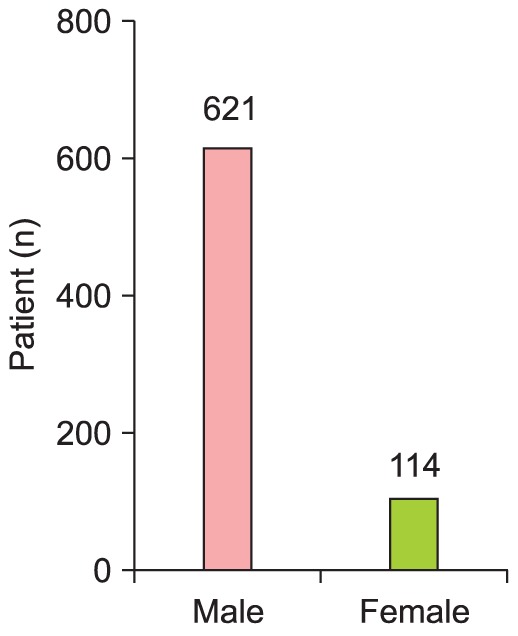
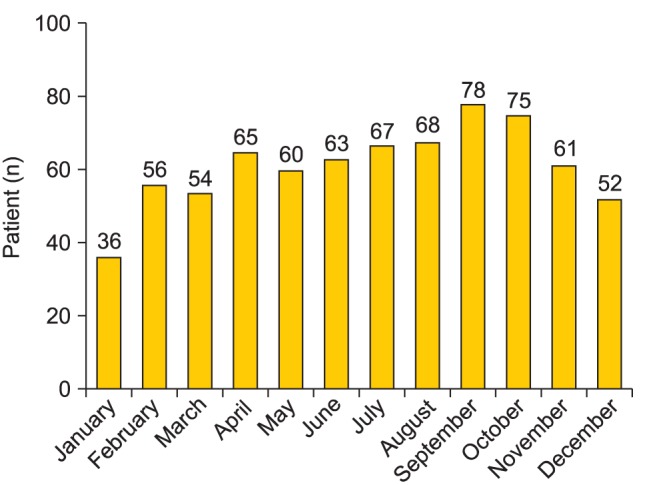

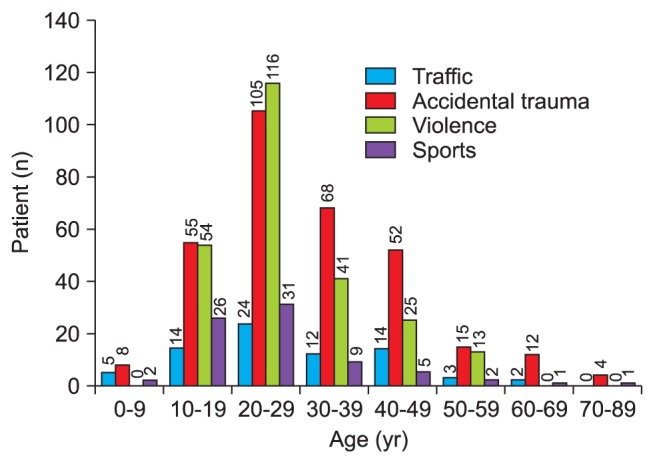
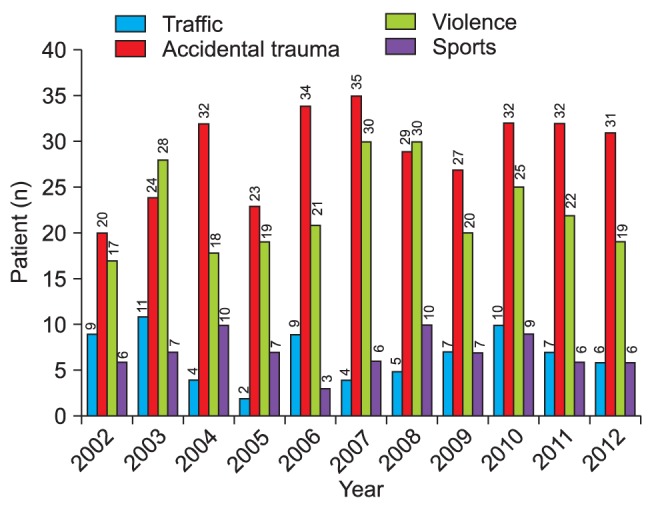





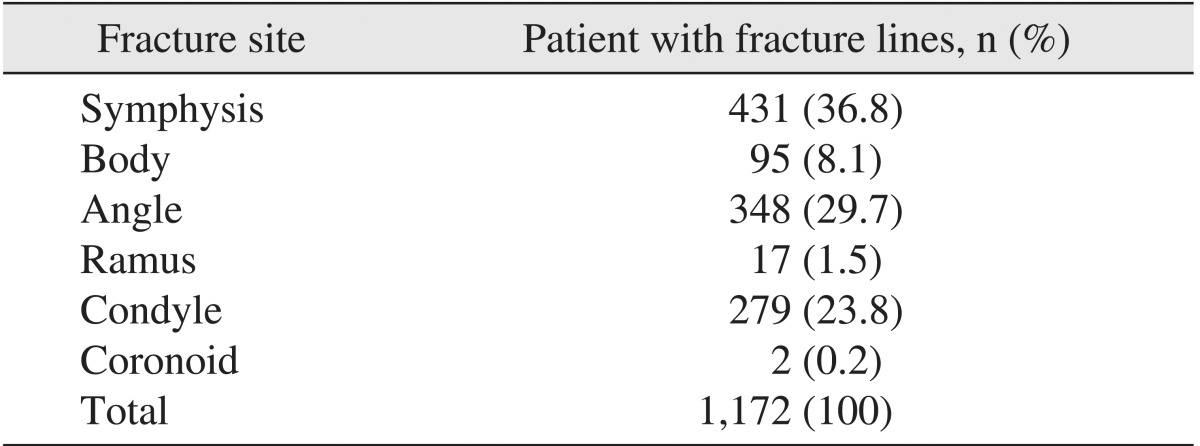
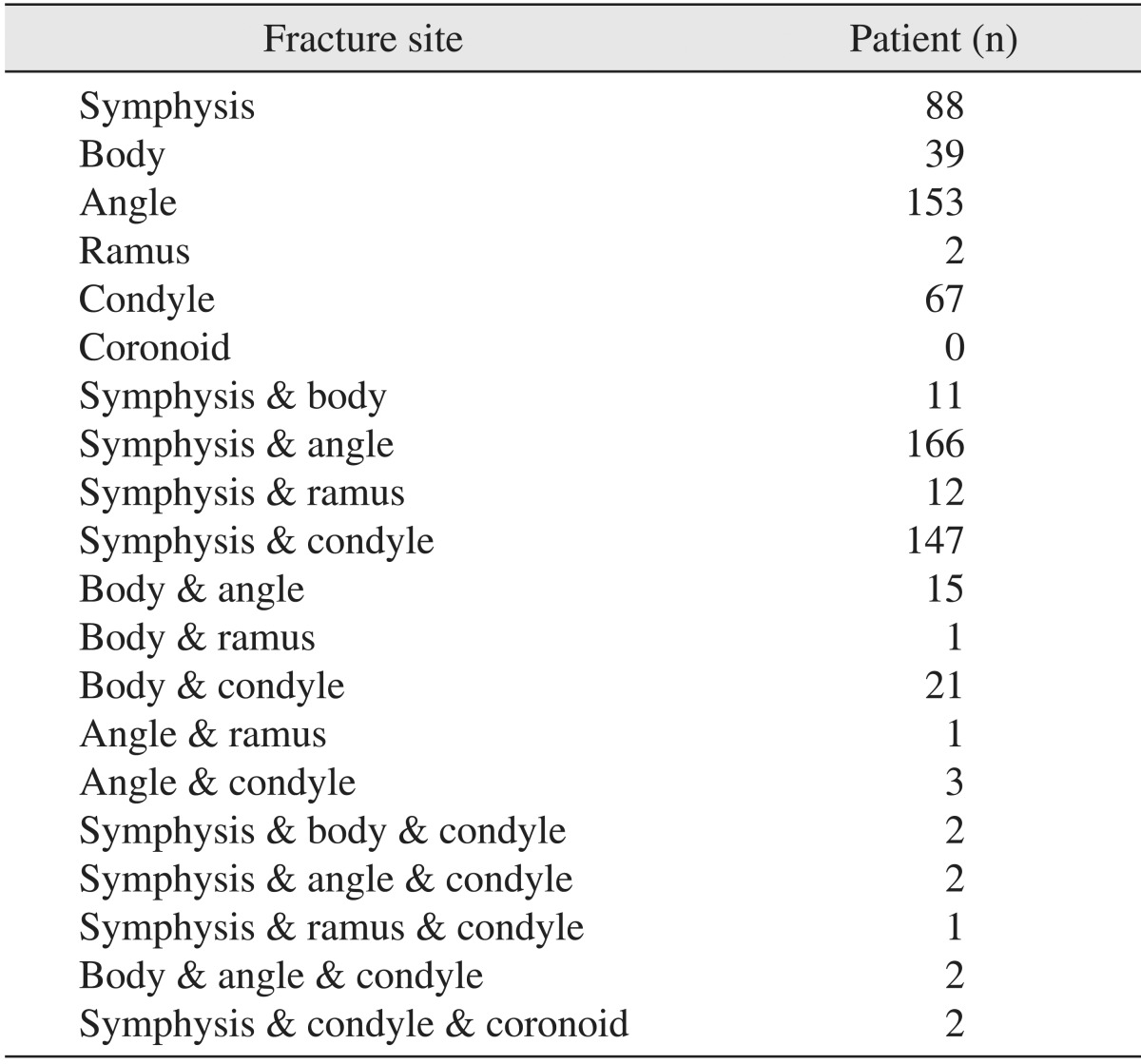

 XML Download
XML Download